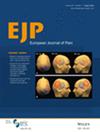Two-Phase Inpatient Withdrawal Programme for Long-Term Opioid Use in Non-Cancer Pain
Abstract
Background
High-dose long-term opioid treatment for chronic non-cancer pain (CNCP) has become an increasing burden in industrialised countries. Opioid tapering and withdrawal in patients with CNCP remain challenging. This study evaluated a two-phase inpatient opioid withdrawal (OW) programme aimed at safely discontinuing opioid use in CNCP patients.
Methods
This prospective observational study was conducted from 2018 to 2023 at a Swiss tertiary care centre, involving CNCP patients on long-term opioid therapy (≥ 6 months, ≥ 100 mg morphine equivalent daily dose) who had failed outpatient withdrawal attempts. The programme consisted of a withdrawal phase (Phase 1) followed by multimodal pain rehabilitation (Phase 2). Outcomes included the proportion of patients opioid-free after Phase 2 (primary) and at 3 months, pain intensity changes, and adverse events (secondary).
Results
Among the 38 enrolled patients (58% female, median age 54 years [IQR 49, 62]), 34 (89%) completed both phases, and 32 (84%) were opioid-free at the end of Phase 2. At 3 months, 23 patients (61%) remained opioid-free, while 4 (11%) resumed opioids, and 11 (29%) were lost to follow-up. Median pain intensity remained stable after discharge. One patient died by suicide 10 days post-withdrawal.
Conclusions
This two-phase inpatient withdrawal and rehabilitation programme enabled most CNCP patients to discontinue opioids without increased pain intensity, with a majority remaining opioid-free at 3 months. These findings highlight the importance of ongoing psychological support and careful patient selection in OW management.
Significance Statement
This study introduces a structured inpatient opioid withdrawal model tailored for chronic non-cancer pain patients on high-dose opioid therapy, demonstrating that high cessation rates can be achieved without worsening pain intensity. By addressing the gap in care for patients who fail outpatient tapering, this research provides clinical insights into optimising withdrawal protocols and highlights the need for targeted resource allocation for intensive, multidisciplinary pain management. These findings support evidence-based decision-making in designing more effective opioid tapering strategies.


 求助内容:
求助内容: 应助结果提醒方式:
应助结果提醒方式:


